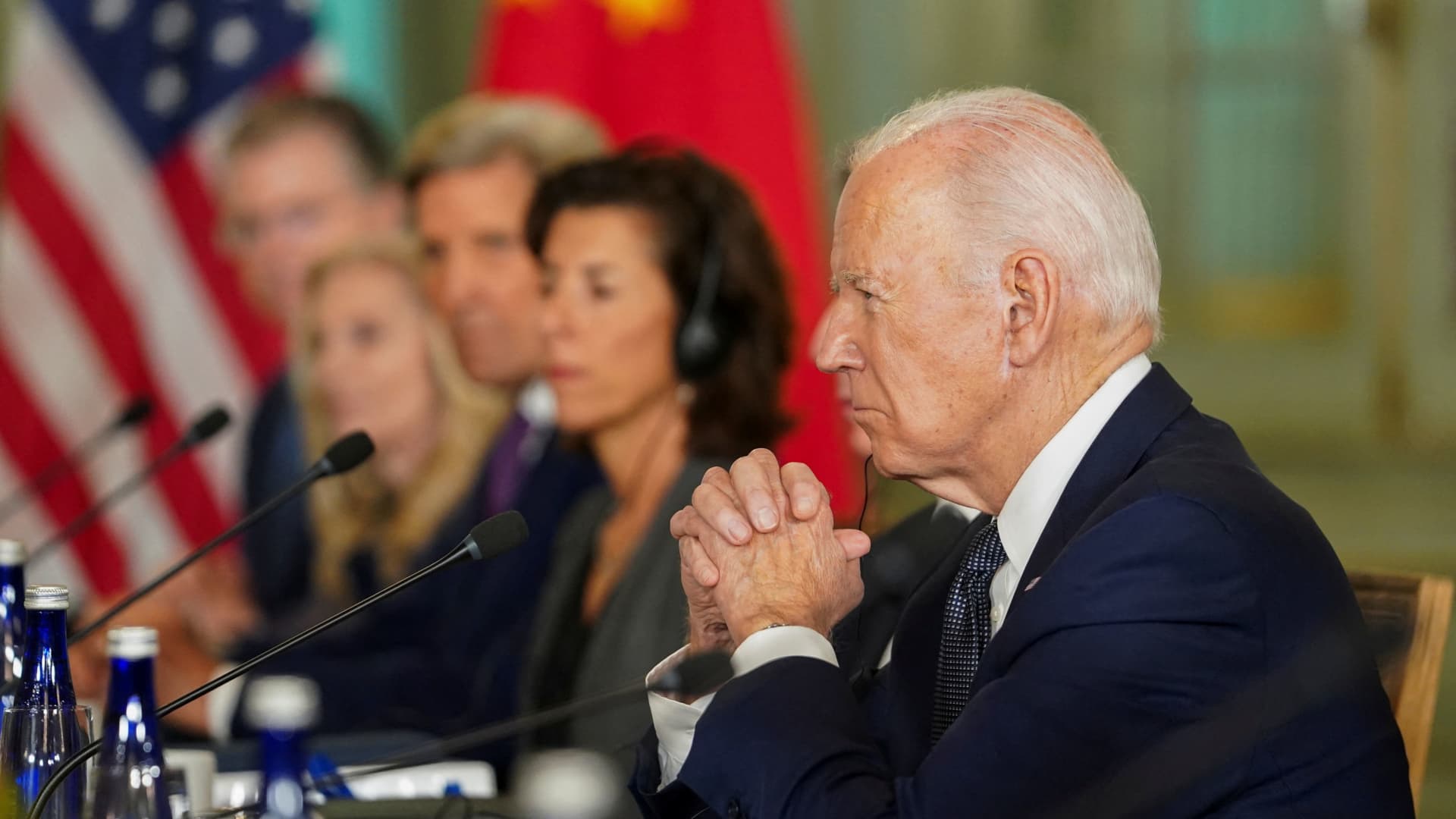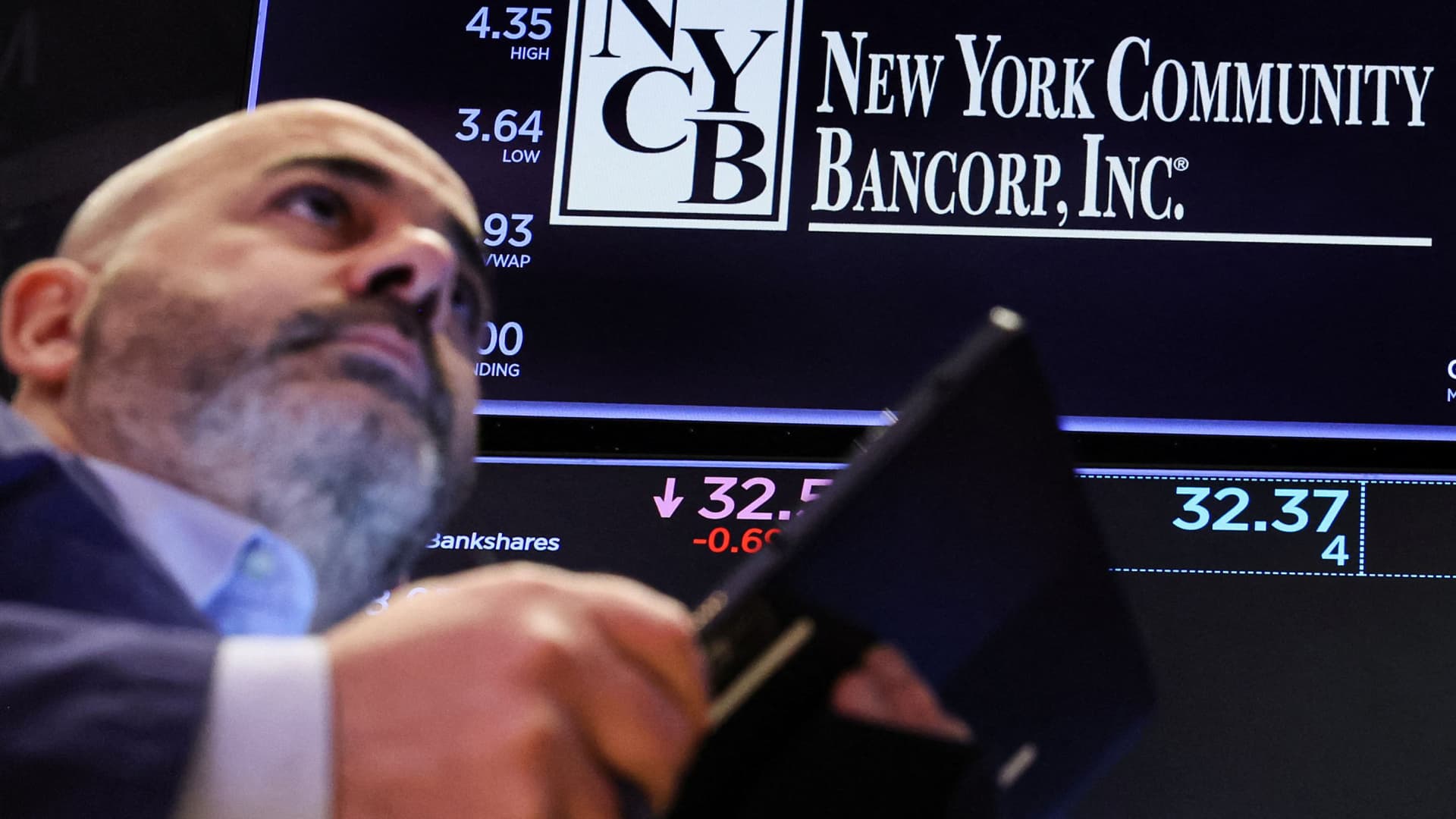U.S. President Joe Biden attends a bilateral meeting with Chinese President Xi Jinping at Filoli estate on the sidelines of the Asia-Pacific Economic Cooperation (APEC) summit, in Woodside, California, U.S., November 15, 2023. REUTERS/Kevin Lamarque
Kevin Lamarque | Reuters
The Biden administration this week sent several signals of a toughening U.S. economic strategy against China.
On Wednesday, President Joe Biden met with Japanese Prime Minister Fumio Kishida in Washington to announce bolstered military collaboration between the two countries and to showcase the strength of the U.S.-Japan economic relationship.
“We agreed that our two countries will continue to respond to challenges concerning China through close coordination,” Kishida said at a joint press conference with Biden after their bilateral discussions.
Earlier in the week, Treasury Secretary Janet Yellen delivered tougher economic red lines on a visit to China.
Yellen amplified a concern shared by the United States and EU members, that Chinese companies are producing an overcapacity of cheap clean energy products like solar panels and electric vehicles. If there are not enough buyers for the supply, Beijing could dump them on global markets.
The U.S. has not ruled out future tariff hikes on Chinese imports if Beijing does not move to address the overcapacity concern, Yellen said in an interview with CNBC’s Sara Eisen, following sessions with her Chinese counterpart Vice Premier He Lifeng.
China has so far denied the overcapacity accusation as “groundless” and fired back that the U.S. is threatening protectionist trade policies to stifle global competition.
The prospect of new economic tensions between the U.S. and China comes as the two countries try to stabilize their already-fraught relationship after several years of minimal communication, sparked in part by a years-long tariff war.
“It remains unclear what this relationship will endure in the months and years ahead,” Yellen said at a press conference in Beijing on Monday.
Taken together, the administration’s moves translate into useful talking points for Biden on the 2024 campaign trail, where he and Republican Donald Trump both express China-hawkish worldviews.
But they also risk refreezing bilateral relations between the two superpowers.
‘Only for show’
Economists largely see Biden’s threat of higher tariffs against China as more of a political tool than an economic one.
“This will not solve the problem. It’s only for show,” said Christopher Tang, a global supply chain professor at the University of California, Los Angeles. “In my view, this is for voters, to rally support for Biden.”
Biden has been ramping up his economic aggression toward China, as Trump does the same, both vying for American workers’ votes.
Trump has said he would consider a 60% tariff on all Chinese imports and a possible 10% tariff on all imports across the board.
Former President Donald Trump speaks to guests at a rally on April 02, 2024 in Green Bay, Wisconsin.Â
Scott Olson | Getty Images
Biden has floated tariffs of his own on Chinese electric vehicles and other clean energy products. The incumbent president has doubled down on these threats, pledging to protect the American green jobs that his 2022 Inflation Reduction Act helped create.
“Tariffs cannot solve the underlying problem, which is that the Chinese system has structural problems that are not being resolved,” said Daniel Rosen, the co-founder of the research firm Rhodium Group.
Rather, Rosen sees tariff hikes as a “stopgap measure” to temporarily rein in overcapacity surges when they happen. He added that the hikes also have political utility by showing voters that “the people currently in power are not asleep at the wheel,” when it comes to global economic threats.
Loopholes and consequences
Tariffs can have unintended economic consequences that end up penalizing American importers and consumers more than they do the intended Chinese exporters.
For example, U.S. importers shouldered almost the full cost of the China tariffs imposed during the Trump administration and largely maintained under Biden, according to a report by the U.S. International Trade Commission.
“U.S. importers have absorbed the costs of the tariffs through a combination of less-favorable margins for sellers and higher prices for consumers or downstream buyers,” the report stated.
Part of the reason is loopholes that Chinese exporters can use to circumvent the tariffs.
“You can impose more tariffs, but there are workaround systems,” said UCLA Professor Tang.
For example, the U.S. Trade Representative’s Office lists tariff exemptions for certain products if stakeholders prove that the tariff caused some form of economic harm or if the product could not be imported from somewhere else.
Chinese exporters can also get around the tariffs by shipping their products to another country for the last manufacturing steps before it goes to its final U.S. destination. China could ship battery components to Mexico, for instance, where the battery would get fully assembled and then exported to the U.S., avoiding the levy.
Overall, tariff hikes could have negative short-term ramifications on the U.S. economy.
Goldman Sachs estimates that for every percentage point increase in the effective tariff rate would directly reduce GDP by 0.03%, increase consumer prices by 0.1% and raise inflation for one year.
“We’ve seen the consequences since Trump’s tariffs…a lot of manufacturers passed on the cost increase to consumers,” said Tang. “Then the question is, what exactly are we trying to accomplish?”







